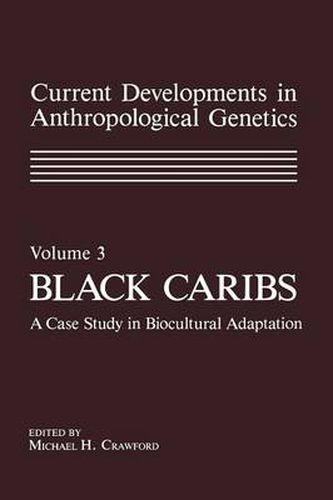Readings Newsletter
Become a Readings Member to make your shopping experience even easier.
Sign in or sign up for free!
You’re not far away from qualifying for FREE standard shipping within Australia
You’ve qualified for FREE standard shipping within Australia
The cart is loading…






This title is printed to order. This book may have been self-published. If so, we cannot guarantee the quality of the content. In the main most books will have gone through the editing process however some may not. We therefore suggest that you be aware of this before ordering this book. If in doubt check either the author or publisher’s details as we are unable to accept any returns unless they are faulty. Please contact us if you have any questions.
While the previous two volumes in this series were based upon methodol ogy, theory, and the relationship between ecology and population structure, this book can be viewed as an in-depth case study. The population genetics of a multitude of diverse groups geographically distributed throughout the world was examined in the first two volumes. In contrast, this volume focuses upon a single ethnic group, the Black Caribs (Garifuna) of Central America and St. Vincent Island, and explores the interrelationships among the ethnohistory, sociocultural characteristics, demography, morphology, and genetic structure of the group. This volume offers a broad and intensive treatment of the Black Caribs and their interactions with surrounding populations. My interest in the genetics of the Black Caribs was sparked by an accidental meeting in Amsterdam, Holland, in March 1975. A conversation with Nancie Gonzalez at the Applied Anthropology Meetings revealed the truth-is-stranger than*fiction history of the Black Carib peoples of the Caribbean. This was a popUlation with a small-sized founding group and a unique biological success story. Nancie Gonzalez was particularly interested in estimating the Carib Indian admixture in the contemporary Garifuna popUlation. Given my previous experi ence in estimating Spanish and African admixture in the Tlaxcaltecan population (whose gene pool consisted predominantly of Indian alleles), a group that appeared to be primarily African with some Indian admixture was of great interest. Aside from the ethnohistorical interest, I believe that such a population may add conSiderably to our understanding of the inheritance of complex morphological traits.
$9.00 standard shipping within Australia
FREE standard shipping within Australia for orders over $100.00
Express & International shipping calculated at checkout
This title is printed to order. This book may have been self-published. If so, we cannot guarantee the quality of the content. In the main most books will have gone through the editing process however some may not. We therefore suggest that you be aware of this before ordering this book. If in doubt check either the author or publisher’s details as we are unable to accept any returns unless they are faulty. Please contact us if you have any questions.
While the previous two volumes in this series were based upon methodol ogy, theory, and the relationship between ecology and population structure, this book can be viewed as an in-depth case study. The population genetics of a multitude of diverse groups geographically distributed throughout the world was examined in the first two volumes. In contrast, this volume focuses upon a single ethnic group, the Black Caribs (Garifuna) of Central America and St. Vincent Island, and explores the interrelationships among the ethnohistory, sociocultural characteristics, demography, morphology, and genetic structure of the group. This volume offers a broad and intensive treatment of the Black Caribs and their interactions with surrounding populations. My interest in the genetics of the Black Caribs was sparked by an accidental meeting in Amsterdam, Holland, in March 1975. A conversation with Nancie Gonzalez at the Applied Anthropology Meetings revealed the truth-is-stranger than*fiction history of the Black Carib peoples of the Caribbean. This was a popUlation with a small-sized founding group and a unique biological success story. Nancie Gonzalez was particularly interested in estimating the Carib Indian admixture in the contemporary Garifuna popUlation. Given my previous experi ence in estimating Spanish and African admixture in the Tlaxcaltecan population (whose gene pool consisted predominantly of Indian alleles), a group that appeared to be primarily African with some Indian admixture was of great interest. Aside from the ethnohistorical interest, I believe that such a population may add conSiderably to our understanding of the inheritance of complex morphological traits.